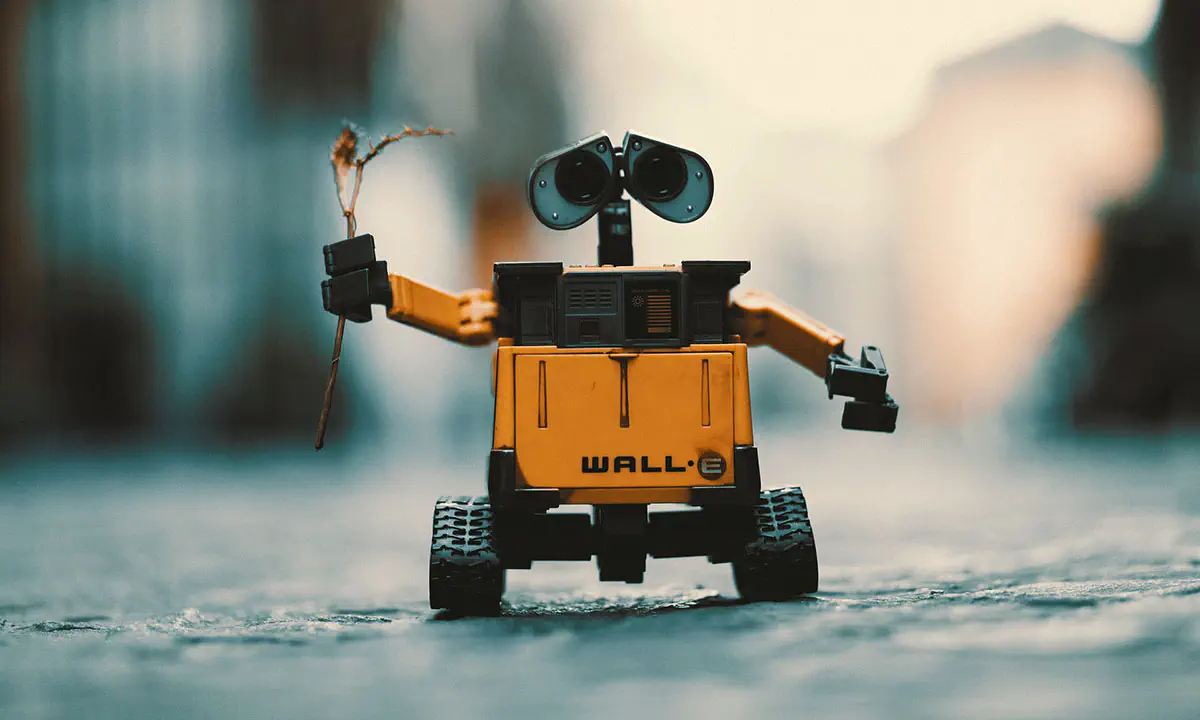Artificial Intelligence: a Pandora's Box or the Holy Grail?

Google, Amazon, Facebook and other tech giants are working on the creation of advanced artificial intelligence systems and their potential application. Have you ever been interested in how it is going now in the field of computer science dedicated to artificial intelligence? What progress has been made in AI and what are the key issues in artificial intelligence?
Let’s ponder on some artificial intelligence important questions and challenges.
What is artificial intelligence?
Probably for most people AI is still a Sci-Fi rigmarole. Talks about the threat posed by artificial intelligence that we may hear in recent years are some sort of a zombie movie. There are numerous misconceptions about the term “Artificial Intelligence” that are present to this day:
AI can solve any problem: People often believe that AI has the ability to solve any problem, regardless of its complexity. However, the reality is that AI is only as good as the data it has been trained on. If the data is incomplete or biased, the results may not be accurate.
AI can replace human judgment: While AI can automate certain tasks, such as data entry or image recognition, it cannot replace human judgment. For example, AI may be able to diagnose a medical condition based on symptoms, but it cannot replicate the experience and intuition of a human doctor.
AI is all-knowing and all-seeing: People often think that AI can learn everything and that it can analyze data from any source. However, AI requires a specific set of data to be trained on and may not be able to analyze data outside of its field of expertise.
AI is autonomous and independent: People often believe that AI is independent and autonomous, able to make decisions on its own. However, AI is programmed by humans and can only make decisions based on its programming.
Reasons for this misunderstanding? To name a few:
AI is a very broad concept. It is used in primal calculators and in high-tech innovations like self-driving cars. And it is something that can change our world. That confuses.
We associate it with science fiction movies. Matrix, Terminator and similar stories about live robots have a significant impact on the perception of real AI. Even God in movies is not shown as powerful as an Excel spreadsheet that got out of a corporation’s control.
Unrealistic expectations. It’s quite possible you already use the outcomes of AI research every day and take it for granted. Virtual assistants such as Apple’s Siri, flying drones, online customer support chatbots, music recommendation services like Pandora and Netflix are our present. But automated robot vacuum cannot compete with robot butler of Tony Stark. High expectations are among the reasons why we misunderstand AI.
Since artificial intelligence is a broad topic it is worth to mention its types. AI that focuses on one task only is called weak AI, a.k.a. narrow. It can beat the Go champion, but it’s the only one area it specializes in. All currently existing systems of AI are narrow. Strong AI, a.k.a. general is a kind of intelligence that can compete a human in different areas. It can solve any problem as compared with weak AI.
Below are some examples of modern developments that involve AI techniques.
Automation of planning and scheduling. Remote Agent, the artificial intelligence system developed by NASA in 1999, ran on the onboard computer of a spacecraft. It established plans based on high-level goals set from Earth and was capable of self-testing and self-repairing in a case of disaster. Thus, Remote Agent enabled a spacecraft to control itself automatically.
Video game AI. If you have ever played games like Mortal Kombat or Need for Speed, you have interacted with video game AI. Artificial intelligence in video games is a set of software methods used in order to give an illusion of intellect in the behavior of non-player characters.
Medical diagnosis. Watson Health, IBM’s AI system, helps in the field of healthcare. The AI program is capable of solving health challenges and providing evidence-based treatment recommendations through the data-driven insights. IBM Watson is also successfully used in drug discovery.
Processing of natural language. It is the ability of AI systems to understand and interpret natural language the way it is spoken or written. Predictive typing in a search bar, spell checker, autocomplete, virtual assistants and other examples of natural language processing are ubiquitous.
The path to AI
Machine learning
The definition of artificial intelligence is mainly focused on its subdiscipline - machine learning. The simplest example of machine learning is when we need to distinguish one thing from another. Rather than to find a direct solution to a problem, machine learning development uses algorithms to train the machine.
That is, instead of hand-coding software with an instruction set for performing a task, a machine is trained by a great quantity of data and algorithms which enable it to learn how to perform the task. Now algorithmic approaches include learning about how to create a decision tree, inductive logic programming, reinforce learning, and clustering among others.
Deep learning
Deep learning is a specific type of machine learning. Let’s say we train our software program by showing it samples of some input data and the right answers or explanation to it. And thus we adjust the program to give right relevant output. If we apply deep learning, the process of selection and configuration of certain indicators becomes automatic. Deep learning, the processing power of modern computers and data storage have resulted in the establishment of artificial neural networks that can mimic human decision making.
The speed of AI advancement
On May 11, 1997, Deep Blue designed by IBM defeated world chess champion Garry Kasparov in a six-game match.
Nineteen years later, in March 2016, Alpha Go, a computer program developed by Google DeepMind for playing the ancient Chinese board game of Go, won four out of five games in the match against Lee Sedol.
In October 2017 the latest evolution of Alpha Go, AlphaGo Zero, exceeded the old version in 40 days. AlphaGo Zero uses reinforcement learning which means it is its own teacher.
Why these examples of artificial intelligence? The Shannon number estimates the game-tree complexity of chess in 10120. With the board’s 361 points of Go, its game-tree complexity is 10360, according to Victor Allis. Something astronomical, eh? Let’s make it more understandable. For comparison: after the fourth move in a game of chess there are about 100 000 possible positions, in Go, this number exceeds 16 billion. And here is an illustration of a tic-tac-toe game-tree.

Not by games alone. AI chatbots, for instance, are also rapidly evolving:
Tay, an AI chatbot released by Microsoft in March 2016 via Twitter, in theory, should have been trained human language and interaction by exchanging words with Twitter users. But having communicated to people for a while, it quickly became a Nazi.
Google’s Deep Brain neural nets Alice, Bob, and Eve demonstrated they can learn to protect information from other neural nets and therefore they may be quite effective in cryptographic protecting as well as attacking.
Bots by FAIR (Facebook Artificial Intelligence Research lab) created an entirely new language which makes sense only for them. This unexpected result was produced by training the bots to negotiate.
The importance of controlling
Neural networks begin to learn at an amazing rate. Computer scientists already don’t understand how sophisticated machine thinking is. Hidden layers of a neural network look incoherent for a human, but for a machine, it makes some sense. Artificial neural networks carry out some tasks better than a human does, but it is not clear how exactly AI achieves the target, which means it can become a real problem to prevent mistakes and possible devastating effects.
Determining the purpose correctly and minimizing unintended consequences when something goes wrong are a major AI challenge. An advanced AI system meets the target by ensuring its existence and occupying processing power because it was programmed to carry out the task. Thus any mistake in machine learning can result in irreversible impacts. That is exactly what Bill Gates, Stephen Hawking, Elon Musk and others are worried about and not because they see the future dystopian.
In order to understand the scale of the challenge, the rise of AI may be compared to discovery the neutron. It has brought us both an efficient type of energy and the most dangerous weapons on earth. AI also can provide stunning benefits for humanity - the brightest intelligence which provides almost infinite possibilities, or can become a Pandora’s Box as well. And that is why it is essential to control the artificial intelligence development.
Interested in AI implementation?
Bottom line
About 200 years ago electricity started to be just a little more than an intellectual curiosity for scientists. In 1969 the Internet began its history. We have known iPhone for only twenty years. Weak AI technologies are already our reality and they cope with difficult tasks. And now the experts predict that the strong AI will appear by 2050.
The technological development is much more rapid than it was in the middle of the last century. It is driven by AI systems that are vastly superior to a human in many areas and the further development of AI technologies will take us to changes that are hard to predict now.
Don't want to miss anything?
Subscribe and get stories like these right into your inbox.
Keep reading

What is a Chatbot and How to Use It for Business Growth
Artificial intelligence is advancing rapidly, and chatbots are becoming a key part of this progress. Messaging apps are driving a growing demand for virtual chatbots.

Optimizing Emails for the Top Email Clients: A Complete Guide
We receive countless emails daily, many of which we skip. Effective emails require custom design, writing, and layouts that work across different devices, OS, and browsers.

In-House or Outsource Custom Software Development? Pros and Cons
We live in a world full of possibilities, but how often do we truly explore them? Take Apple, known for its innovative yet pricey products, like the $1000 iPhone made in China.
Contact us
Let's explore how our expertise can help you achieve your goals! Drop us a line, and we'll get back to you shortly.